
The winter-flowering Spreading Wattle, Acacia genistifolia provides excellent habitat for birds and spiders and is one of the local species that volunteers planted at The Fair to replace Sweet Briar roses and other woody weeds.
Join in the working party at The Fair on Sunday 16 June and help spreading mulch around plantings.
When: Sunday 16 June from 10 am to 3 pm; give as much time as you like.
Where: Nature reserve east of The Fair, North Watson; access and volunteer registration at park entrance Tay / Ian Nicol Streets; view this map.
Bring: Garden gloves, sun protection, drinking water and wear sturdy shoes.
Enquiries: projects@majura.org
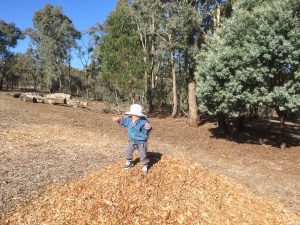
21 months young Friend of Mt Majura Luna performs a perfect balanced Taichi single whip on a pile of mulch at The Fair; photograph taken by her father Sam.
Mob during the event: 0435 357 172
About The Fair
Since the start of The Fair project in 2012 volunteers replaced hundreds of woody weeds with local shrubs and trees to provide food, nesting and protective habitat for declining woodland birds that visit and live in the nature reserve east of The Fair. Planting of local species and removal of weeds was carried out in stages to provide suitable habitat during any time of the process. We hope our work ensures vulnerable species such as Scarlet Robins and Speckled Warblers will be visiting the area for many years to come.

A Fair patch with Paterson’s Curse, 13 May 2014
Starting in the south and working towards the north volunteers spent 1000s of hours to improve the ground cover layer by controlling herbaceous weeds *, manually loosening compacted soil, spreading wood chip mulch and woody debris – making best use of removed woody weeds – collecting seeds, direct seeding various local grasses and planting wildflowers.

… the same patch after spraying, 29 August 2014
*The most common herbaceous weeds are Paterson’s Curse, St John’s Wort, Saffron thistle, Scotch thistle, Slender thistle, Spear thistle, Variegated Thistle, Hirschfeldia, and Horehound; the most troublesome weeds apart from St John’s Wort are introduced grasses, particularly Serrated Tussock and Chilean Needlegrass, both of which are Weeds of National Significance.
Work in Progress
The two sets of photographs below show northwest and northeast views of an area in the reserve east of The Fair taken around the same time of 4 consecutive years from 2014 to 2017 and recently end of May 2019. The first set shows a northwest view downhill towards the gully in the north from close to the big conifer (visible on the right-hand side) and the second set shows a northeast view from close to the conifer; the water container visible in the photographs has not been moved since the first photos were taken in May 2014.
Paterson’s Curse, the most noticeable weed at that time of the year, formed dense carpets in autumn 2014. Many volunteer’s hours later in autumn 2017, Paterson’s Curse occurs in a few scattered stands hardly visible among the native grass that had been directly seeded into a cover of wood chip mulch. The loss of grassy groundcover shown in the 2019 photos is the result of massive overgrazing during dry conditions.
Northwest view
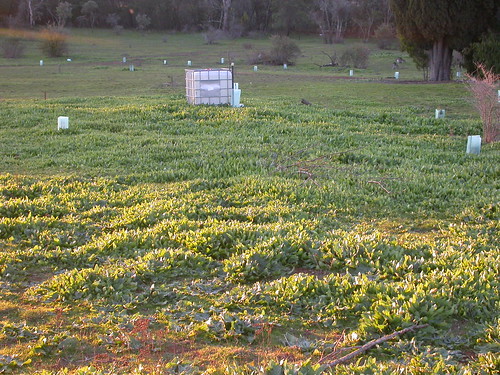
13 May 2014

2 June 2015

31 May 2016
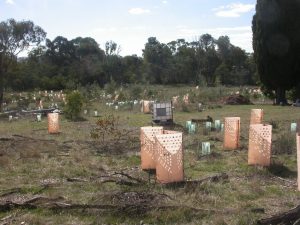
11 April 2017

24 May 2019 – loss of grassy groundcover as a result of overgrazing during dry weather conditions
Northeast view
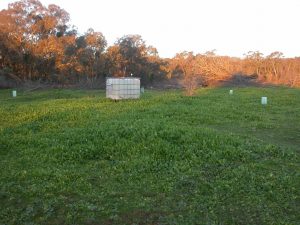
13 May 2014
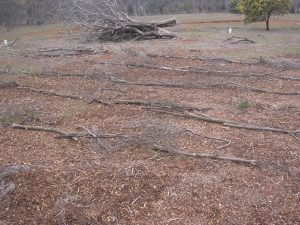
2 June 2015

31 May 2016
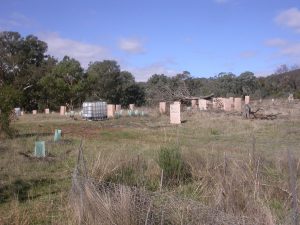
11 April 2017

24 May 2019 – loss of grassy groundcover as a result of overgrazing during dry weather conditions


